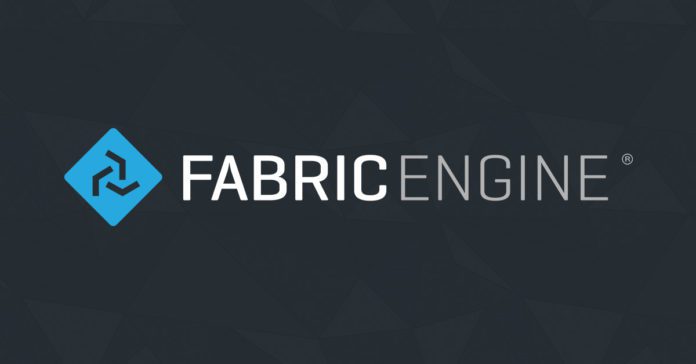New Industries Adopting Fabric Engine – Here’s Why
FABRIC SOFTWARE(www.fabricengine.com) has traditionally been adopted by VFX companies that want to streamline their in-house development by building custom tools and applications that work both standalone and within standard applications like 3ds Max, Maya and Houdini. Now industries in addition to visual effects producers are turning to Fabric for the same reasons.
“The need for custom development is present in many fields, not just VFX production,” said Paul Doyle, Fabric Software CEO. “Customers in game development and design visualization choose Fabric because they want more control over their tools and to make sure their development efforts are not limited to a single host application. Fabric lets them build custom tools that are highly portable across the heterogeneous applications found in a modern production studio.”
Fabric Engine is used to create high-performance graphics applications that can run standalone or within a range of common applications. Fabric is also increasingly used in conjunction with real-time engines like Unity and Unreal Engine.
Why Fabric?
Guerrilla Games: “We have chosen Fabric as it perfectly matches our need for modular rigging and allows for improvement in the speed of the evaluation of complex rigs. We spent the last half year evaluating whether we’d be able to get what we wanted out of Fabric and we have not found any other tool that comes close.” Bart Wijsman, Lead Technical Animation
ECCO: “Fabric Engine is used in multiple areas of the company, primarily to speed up the production of digital samples. In ILE (Innovation Lab ECCO) we use it for creating and experimenting with quicker and more efficient ways of doing……pretty much anything. Being able to create a set of ‘rules’ where we can automatically generate geometry correctly and accurately is one area where Fabric is ideal, we create the stitching this way.” Joe Mitchell, 3D Design and Visualization Manager
PlatinumGames: “The two most decisive factors in selecting Fabric Engine were the excellent performance and the fact that iterations are created quickly and smoothly. In comparison to past facial rigging, Fabric Engine offers three times as many controlling joints and allows for even more complex processing as well, while at the same time dramatically increasing the average frame rate from 15fps to 45 fps.” Masanori Takashima, Rigger, Technical Artist.
ZeniMax Online Studios: “It’s not very often that paradigm shifting software shows up at your doorstep. But that’s what Fabric Engine is, and shifting our operational paradigms is what it’s allowing us to do. From offline data processing to live user interaction within multiple DCCs, Fabric Engine offers great performance and an opportunity to build more flexible and dynamic solutions no matter what the domain. It’s enabling us to build a scalable system for the future.” Judah Baron, Lead Technical Artist
Rooster Teeth: “Fabric Engine allows us to make tools in one place that work in multiple packages and engines without hassle. With it, we are building an enduring pipeline that includes instancing, crowd simulation, rigging improvements, scene assembly and other interactive tools.” Eric J. Turman, Supervising Technical Director
About Fabric Engine
Fabric Engine is a platform for building high-performance graphics applications. It is used to build the “best tool for the job” for game development, visual effects, visualization and virtual reality. Fabric consists of a language (called KL), a visual programming environment (called Canvas) and a multi-threaded core execution engine. Fabric is integrated with many familiar applications like Maya and it also can be used to build standalone applications that work across studio pipelines.
To learn more, please visit www.fabricengine.com














